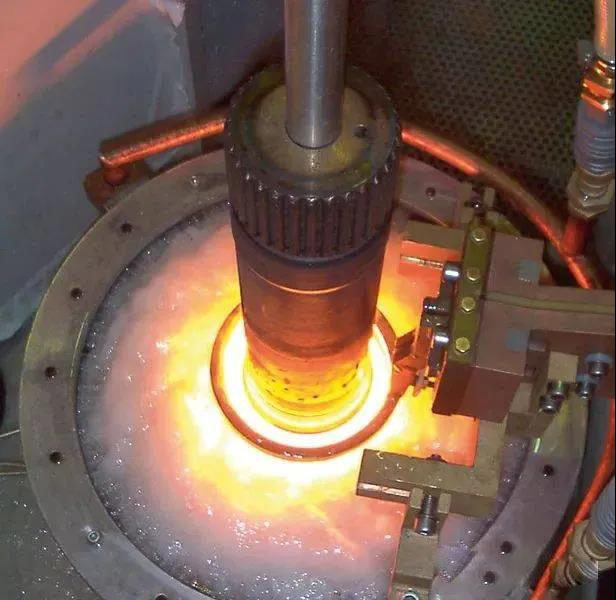Hardenability and hardenability
2022.01.05
Hardenability and hardenability are two performance indicators that characterize the quenching ability of steel, and they are also an important basis for material selection and use.

1. The concept of hardenability and hardenability
Hardenability is the ability of steel to achieve the highest hardness that can be hardened after quenching under ideal conditions to obtain martensite. The main factor that determines the level of hardenability of steel is the carbon content of the steel, more precisely the carbon content of solid solution in austenite during quenching heating. The higher the carbon content, the higher the hardenability of the steel. The alloying elements in steel have little effect on the hardenability, but have a significant effect on the hardenability of the steel.
Hardenability refers to the ability of a steel to obtain the depth of the hardened layer when quenched under certain conditions. It is mainly affected by the carbon content and alloying elements in the austenite. It refers to the hardness and hardness distribution of the steel under specified conditions. The hardenability of steel is good and poor. It is usually expressed by the depth of the hardened layer. The greater the depth of the hardened layer, the better the hardenability of the steel. The hardenability of steel mainly depends on its chemical composition. The steel with good properties can obtain uniform mechanical properties of the entire section of the steel parts and the quenching medium with low quenching stress of the steel parts can be selected to reduce deformation and cracking.
In addition, because hardenability and hardenability are two concepts, steel with high hardness after quenching may not necessarily have high hardenability; and steel with low hardness may also have high hardenability.
2. Hardenability evaluation method
The currently accepted method in the heat treatment industry is to use the HP-IVF method of Sweden IVF, which was pioneered by Dr. Soren Segerberg of Sweden IVF.
2.1 The calculation formula for the hardenability of ISO9950 standard quenching oil:
HP-IVF(oil)=91.5+1.34Tvp+10.88CR550a-3.85Tcp
Remarks: Tvp is the transition temperature (characteristic temperature) from the vapor film to the boiling stage
CR550a is the average cooling rate between 600-500℃ (can be obtained directly through IVF software)
Tcp is the transition temperature from boiling to convection
(intended for unalloyed steels for unalloyed steel)
2.2 The formula for calculating the hardenability of the quenching liquid used in the ASTM standard:
HP-IVF(polymer)=3.54CR550+12.3CR325b-168
Remarks: CR550 represents the CR value of 550 degrees Celsius
CR325b represents the CR value of 325 degrees Celsius
(intended for unalloyed steels for unalloyed steel)
3. Factors affecting hardenability
The hardenability of steel depends on the stability of austenite. Any factor that can improve the stability of undercooled austenite and shift the C curve to the right, thereby reducing the critical cooling rate, can improve the hardenability of high steel. The stability of austenite mainly depends on its chemical composition, grain size and composition uniformity, which are related to the chemical composition of steel and heating conditions.
4. Measurement method of hardenability
There are many methods for measuring the hardenability of steel, and the commonly used methods are the critical diameter measurement method and the end quenching test method.
(1) Critical diameter measurement method "After the steel is quenched in a certain medium, the maximum diameter at which all martensite or 50% martensite is obtained in the core is called the critical diameter, which is represented by Dc. The critical diameter measurement method is to make a series of round rods with different diameters. After quenching, measure the hardness U curve along the diameter distribution on each sample section, and find out the round rod whose center is exactly half martensite. The diameter of the round rod It is the critical diameter. The larger the critical diameter, the higher the hardenability of the steel.
(2) End-quenching test method The end-quenching test method is to use standard size end-quenched specimens (Ф25mm×100mm), after austenitizing, spray water on one end of the special equipment to cool, and then cool it along the axis direction Test method for measuring the relationship curve of hardness-distance from the water cooling end. The end-quenching test method is one of the methods for the hardenability of Lyuding steel. Its advantages are simple operation and wide application range.
Previous:The generation, classification and removal method of residual stress
Next:When are the three auxiliary gases of air, oxygen and nitrogen used for laser cutting?
Related Information
- Industry news
- The tap or drill bit breaks in the hole, how to fix it?
- Why do airplanes use rivets instead of welding?
- Why are engineering drawings all blueprints?
- How is a ping pong ball made? It turns out that it is made of two pieces of plas
- What to do if quality is abnormal? Doing these 3 things well is the key!
- Weekly News 9.7-9.13
- Huawei's three-fold screen is approaching, and the domestic supply chain is wait
- Innovative application of digital twin technology in integrated die-casting prod
- 5 types of carbide cutting tools, what are the differences? Save this article an
- Global manufacturing PMI in June was 49.5% | Weekly News 7.6-7.12
- Raw material defects | Machining special operations and practical cases 109
- No wonder Toyota stamping is so good: a day in the life of a Toyota stamping sho
- Analysis on the development trend and demand of China's mold industry
- How many types of sealing rings are there in machinery? What are they used for?
- Hangfa, Hangfa, a scar on the hearts of machine processing workers
- How to mill a large arc surface with a small cutter?
- Dynamics of the processing center of the process! What is the fundamental reason
- 500 ° C ultra -strong aluminum alloy! This problem is overcome
- How much do you know about the hometown of machine tools and molds, how much do

 BACK
BACK MT HOME
MT HOME Navbar
Navbar